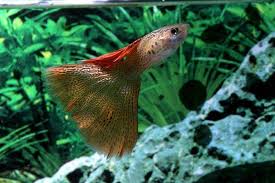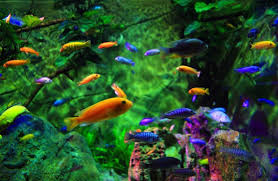Tết Nguyên Tiêu, or the First Full Moon Festival, is a special occasion in Vietnamese culture, celebrated on the 15th day of the first lunar month. This festival, which marks the culmination of the Lunar New Year celebrations, is deeply rooted in the cultural and spiritual fabric of Vietnam. One of the most cherished traditions during Tết Nguyên Tiêu is the preparation and consumption of Canh Bánh Trôi, a sweet, warm, and comforting dish that has become synonymous with the festival. In this article, we will explore the cultural significance, preparation process, and variations of Canh Bánh Trôi on Tết Nguyên Tiêu, shedding light on the culinary and symbolic importance of this dish.

The Significance of Tết Nguyên Tiêu
Tết Nguyên Tiêu is an important festival in the Vietnamese calendar, occurring two weeks after the Lunar New Year (Tết Nguyên Đán). The celebration marks the first full moon of the lunar year and symbolizes the end of the Tết holiday period. It is also seen as a time to honor the ancestors, celebrate family unity, and pay respects to deities.
The festival is associated with various customs, including lighting lanterns, making offerings, and preparing special foods. In addition to its cultural significance, Tết Nguyên Tiêu is also linked to the belief in the power of the full moon. The full moon is often seen as a symbol of completeness, renewal, and the balance of yin and yang. As such, the dishes prepared during this time often reflect themes of harmony, wholeness, and the cycle of life.
Among the many foods prepared for Tết Nguyên Tiêu, Canh Bánh Trôi stands out as one of the most beloved and widely consumed. This dish not only delights the senses but also carries deep symbolic meaning, making it an essential part of the celebration.
What Is Canh Bánh Trôi?
Canh Bánh Trôi, or “Floating Cake Soup,” is a traditional Vietnamese dessert made of glutinous rice flour dumplings filled with sweet ingredients such as mung bean paste, black sesame, or sugar. These dumplings are typically served in a warm, sweet, and aromatic broth made from ginger, sugar, and coconut milk, creating a comforting and satisfying dish. The name “Bánh Trôi” refers to the shape of the dumplings, which are round and often float in the soup, symbolizing the moon and the cycle of life.
The dish is characterized by its delicate balance of textures—the chewy, soft rice dumplings contrast beautifully with the smooth and aromatic broth. Canh Bánh Trôi is traditionally served warm, making it a perfect comfort food during the chilly days of the first lunar month. It is typically enjoyed by families as a way to bring luck, harmony, and unity to the household for the year ahead.
Symbolism of Canh Bánh Trôi
Like many traditional Vietnamese dishes, Canh Bánh Trôi is rich in symbolism. The round shape of the dumplings is a clear representation of the full moon, which is central to the Tết Nguyên Tiêu celebration. The moon, in many cultures, is a symbol of unity, wholeness, and completeness. By serving round dumplings in the soup, Canh Bánh Trôi reflects the idea of balance and harmony—important themes of the festival.
Furthermore, the sweet filling inside the dumplings, often made with mung beans or black sesame, is symbolic of prosperity and abundance. In Vietnamese culture, mung beans are considered a lucky ingredient, as they are believed to bring wealth and good fortune. The addition of ginger in the broth also has symbolic significance, as it is often associated with warmth, protection, and positive energy.
The act of preparing Canh Bánh Trôi is a communal one, often involving family members coming together to make the dumplings. This act of unity and cooperation mirrors the broader themes of togetherness and familial bonding that are central to Tết Nguyên Tiêu. Sharing a bowl of Canh Bánh Trôi with loved ones symbolizes the hope for a year filled with peace, health, and prosperity.
Ingredients and Preparation of Canh Bánh Trôi
Making Canh Bánh Trôi requires a few key ingredients, but the process of preparing the dish can be time-consuming and labor-intensive. However, the effort is well worth it, as the final product is a delicious and meaningful treat that brings joy to all who partake in it.
Ingredients for the Dumplings:
- Glutinous rice flour: This is the main ingredient for the dumplings, providing their chewy and sticky texture. Glutinous rice flour can be found in most Asian grocery stores.
- Water: Water is used to bind the rice flour together and form a dough. The amount of water may vary depending on the desired consistency of the dough.
- Mung bean paste or black sesame paste: These are the traditional fillings for the dumplings. Mung beans are cooked, mashed, and sweetened to create a smooth paste, while black sesame seeds are ground into a paste with sugar. Some variations use sweetened coconut paste as the filling.
- Sugar: Sugar is used to sweeten the filling and the broth. It is typically added in the form of white sugar or brown sugar for a richer flavor.
Ingredients for the Broth:
- Ginger: Fresh ginger is sliced and boiled to create a fragrant, spicy base for the broth. Ginger is known for its warming properties, which make the dish perfect for the cool weather of Tết Nguyên Tiêu.
- Coconut milk: Coconut milk adds a creamy and slightly sweet flavor to the broth, balancing the spice of the ginger and the sweetness of the dumplings.
- Sugar: As mentioned earlier, sugar is used to sweeten the broth, creating a harmonious contrast with the spiciness of the ginger and the richness of the coconut milk.
Optional Garnishes:
- Shredded coconut: Some people like to garnish their Canh Bánh Trôi with shredded coconut, which adds a delightful texture and extra sweetness.
- Sesame seeds: Toasted sesame seeds can be sprinkled on top of the dish for added flavor and crunch.
The Preparation Process:
- Prepare the dumplings: In a large bowl, mix the glutinous rice flour with a little water, kneading until a smooth, elastic dough forms. Divide the dough into small balls, then flatten each ball in your palm. Place a small spoonful of mung bean or black sesame paste in the center of each flattened dough disc, then carefully seal the dough around the filling to form a round dumpling. Repeat this process until all the dumplings are made.
- Cook the dumplings: Bring a large pot of water to a boil. Gently drop the dumplings into the boiling water and cook them until they float to the surface, which usually takes about 5–7 minutes. Once the dumplings float, allow them to cook for an additional 2–3 minutes to ensure they are fully cooked.
- Prepare the broth: While the dumplings are cooking, prepare the broth by boiling slices of ginger in a pot of water. Once the water has boiled for a few minutes, add sugar and coconut milk, stirring until the sugar dissolves and the broth becomes fragrant.
- Assemble the dish: Once the dumplings are cooked, transfer them to a bowl. Pour the warm ginger-coconut broth over the dumplings and garnish with shredded coconut or sesame seeds if desired.
- Serve and enjoy: Serve the Canh Bánh Trôi hot and enjoy it with your family and friends during Tết Nguyên Tiêu. The dish can be enjoyed as a dessert, snack, or a symbol of togetherness during the celebration.
Variations of Canh Bánh Trôi
While the traditional version of Canh Bánh Trôi is made with mung bean or black sesame paste, there are many regional and personal variations of the dish. Some people may opt to use different fillings, such as sweetened peanut paste or even coconut. Additionally, some variations of the broth use pandan leaves for a fragrant, green infusion or add a touch of wine for a more complex flavor profile.
In recent years, many people have experimented with modern twists on Canh Bánh Trôi, such as adding fruits like durian or jackfruit to the filling, or using colorful glutinous rice flour to create dumplings in a variety of vibrant hues. These creative adaptations bring a contemporary flair to this traditional dish while still honoring its cultural significance.
Conclusion
Canh Bánh Trôi is more than just a dessert—it is a dish that carries deep cultural and symbolic meaning. The round shape of the dumplings, the fragrant ginger broth, and the sweet fillings all come together to create a dish that represents unity, prosperity, and harmony, making it an essential part of the Tết Nguyên Tiêu celebration. Whether enjoyed in its traditional form or with a modern twist, Canh Bánh Trôi remains a beloved dish that brings families together, strengthens cultural ties, and reminds us of the importance of renewal and unity as we usher in the first full moon of the year.

Leave a Reply